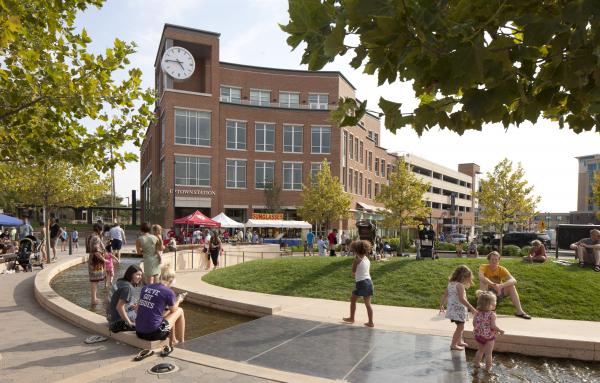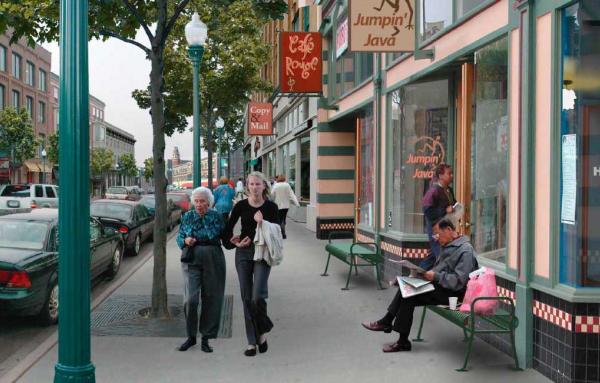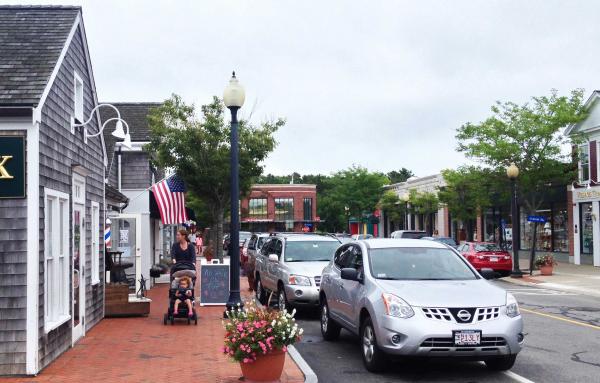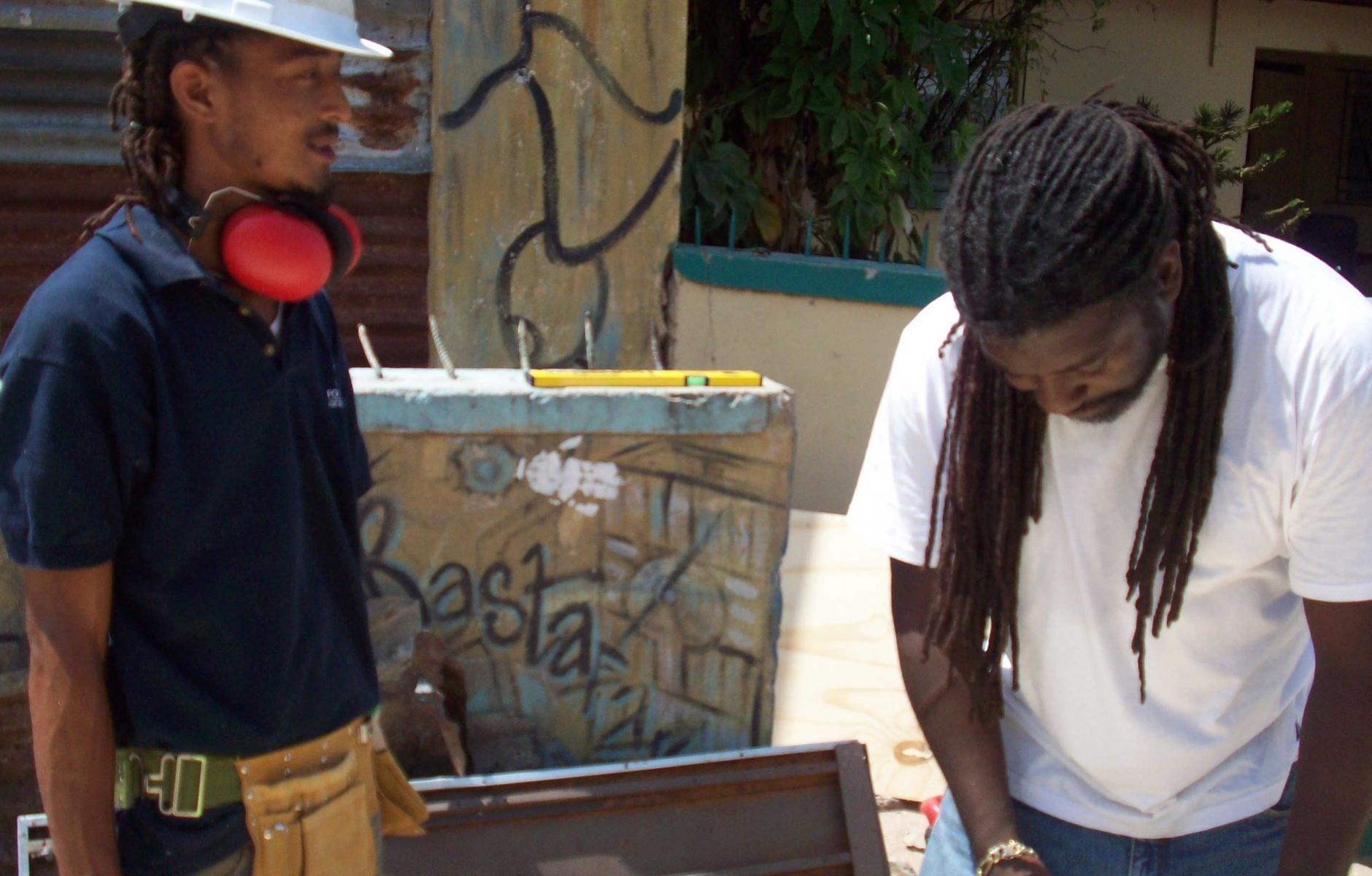
Great idea: Lean Urbanism
In celebration of the 25th Congress for the New Urbanism, Public Square is running the series 25 Great Ideas of the New Urbanism. These ideas have been shaped by new urbanists and continue to influence cities, towns, and suburbs. The series is meant to inspire and challenge those working toward complete communities in the next quarter century.
Lean Urbanism is a multidisciplinary movement to lower the barriers to community-building, to make it easier to start businesses, and to provide more attainable housing and development. Like New Urbanism, Lean shares the principles of creating holistic communities—but it seeks more efficient ways to achieve that end to allow small operators to take part. Great neighborhoods need to be built by multiple hands—including those with limited capital.
Public Square editor Robert Steuteville interviewed Hank Dittmar, a urban planner who advises governments, companies, and communities worldwide on making cities and towns more livable and resilient, and Brian Falk, director of the Center for Applied Transect Studies and the Project for Lean Urbanism, on the the subject of Lean Urbanism.

What is Lean Urbanism and how does it differ from New Urbanism?
Falk: Lean Urbanism is community building that requires fewer resources. It reduces the requirements, complexities, and costs that unfairly burden small-scale developers, entrepreneurs, and homeowners. We’ve put these ideas into practice through initiatives like the Project for Lean Urbanism.
Dittmar: Lean Urbanism was conceived as an effort to deal with a problem that many of us had. It was difficult to get common sense ideas through the planning and building process. We observed that it was almost as hard to do 5 homes as it was 500. And so Lean Urbanism, unlike the New Urbanism, is much more about incremental development. It's much more about identifying projects in an infill context and short-term opportunism. In British planning, there's a phrase for things that come along that aren't in the master plan. They're called windfall projects, as in apples that fall from the tree. Lean Urbanism recognizes that a lot of what's great about our cities are windfall projects.
What does it have in common with New Urbanism?
Dittmar: First of all, it shares the ideals of the Charter. Lean Urbanism is part and parcel of the New Urbanism. It sits within it, but it attempts to fill a gap that we saw, in terms of a smaller scale. As we see it, Lean Urbanism is mixed-use, walkable, contextual, and it aims to complete the neighborhood. This is about the missing teeth—doing some good dental work.
What is the Project for Lean Urbanism?
Falk: The Project for Lean Urbanism is a multi-year project that's developing tools to make small possible. The project focuses primarily on three goals: incremental successional growth, reducing the resources required for compliance, and providing ways to work around financial, bureaucratic, and regulatory processes that disproportionately burden the small actors and small projects. One of its goals is to make it possible for residents and business owners to participate in the building of their homes, their businesses, and their communities.
Dittmar: The first phase of the project defined the idea and began to develop the parameters and some of the tools. The second phase, which we're in now, aims to demonstrate that the project can make a difference through pilots on the ground in a number of cities, and through those pilots to develop toolkits that can be disseminated broadly.
Can you talk about some of the specific lean projects and what they accomplish?
Dittmar: One of our tools, the “lean scan,” identifies in a community both the barriers to small-scale development and the opportunities that might exist if it can assemble a crew of committed people in the private and public sectors who commit to short-term actions over a three-to-five-year period. That is followed by a second workshop that introduces the “pink zone.” The pink zone is an area where red tape is lightened and where human capital is brought to bear on enabling small. It could be as big as a district or as small as a corridor, but it identifies a series of short-term projects that would catalyze development.
Falk: For the pilot projects, we have four at the moment: Lafayette LA, Chattanooga TN, St. Paul MN, and Savannah GA. Once we develop and refine these tools, we’ll release them as part of a toolkit that we plan to make available to all free of charge.
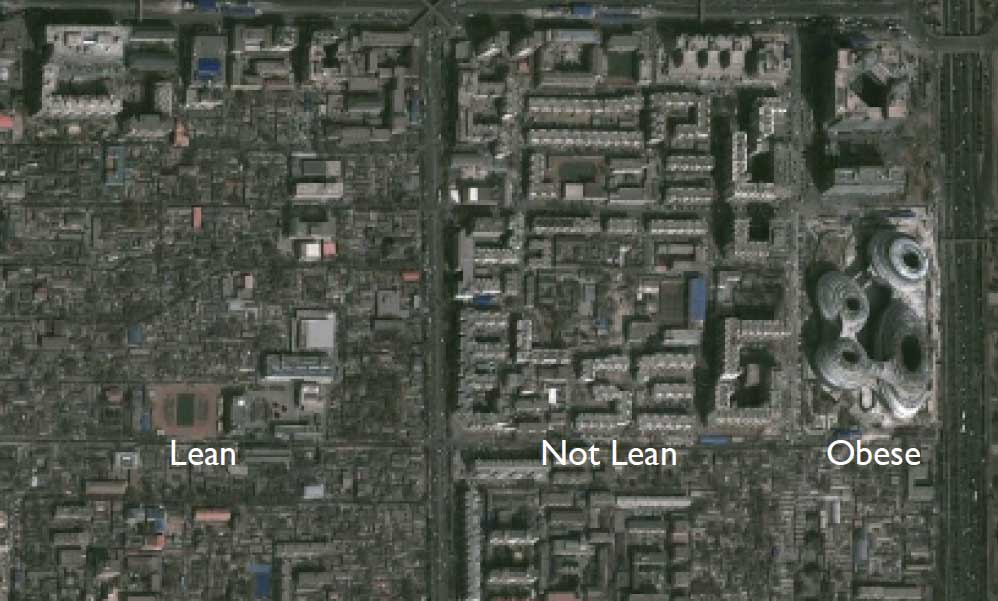
Can you talk about how any of those pilot cities are easing red tape?
Falk: We've done the first phase, the lean scan, in three of the four, and now we need to test the pink zones.
Dittmar: There are some characteristics of the type of areas that we want to work in in each of these cities. Typically, it’s a place close to but not in, the city center. Places where development is not impossible but is not active. And places where there are clear opportunities for infill. Ideally we're also looking at neighborhoods where we can identify people and community organizations that can take up the challenge. Either small businesses, not-for-profits, or even homeowner or small business groups that want to get involved, and want to get involved in a way that's different from the community development model that involves subsidies. Because this is not about subsidized redevelopment.
How have the citizens and public officials reacted in these communities to this idea of Lean Urbanism?
Dittmar: We sent out an open call to a number of cities and we received several applicants. The cities that were selected offered both a public and a private sector commitment to involvement. At the leadership level, they're all engaged in the idea of Lean Urbanism and have made funding commitments to match the grant money and in-kind resources that we're bringing to the table. I firmly believe that if you don't have skin in the game you're not really playing the game for real. With the scans, we've begun to talk to residents and developers and we're finding real interest. This isn't about wholesale redevelopment. It's about filling in missing pieces.
Falk: We offer municipalities a way to diversify their economic development, which very often take a large approach, larger employers, larger projects, etc. By focusing on the smaller projects and the smaller players who are often overlooked, they get to diversify in a way that essentially costs them nothing. They don't have to invest in this, but rather just get out of the way. The residents, the people who live in these communities, like it because we're offering them a way to get involved in this economic development, in the revitalization of their communities, as participants, not bystanders. Many people feel that previous efforts to create economic development have been exclusively top-down and haven't taken their desires and needs into account. Finally, the business community, whether it's entrepreneurs or developers, are now excited about the idea of being able to make projects work and pencil out, ones that previously couldn’t because the cost of compliance was too high or it was too difficult to find financing in their area.
I was looking at the Lean Urbanism website, and one of the significant points that struck me is that it says the current system is unfair. Can you talk a little bit about why that is?
Dittmar: Often the level of expertise, the resources and time availability that is assumed about development, it allows for someone familiar with the process to come into a city and build a hotel, a large apartment complex, or a subdivision, but it creates a very high barrier to entry for the person who wants to do a four-unit building, or four to five shopfronts on an arterial roadway, or convert an older building into artist studios. The person who's doing this for the first time doesn't have ready access to the expertise of the traffic consultant, the architect, the landscape architect, and the lawyer. There isn't an easy pool of available capital. They don't know which bank to go to, and then when they encounter planning and building regulations, they often find that they have to fulfill the same requirements as the large-scale projects. In the Lean Urbanism, we talk about identifying thresholds underneath which small-scale development might not have to meet certain requirements. There are workarounds, which meet the requirements without necessarily having to go jump through every hoop on the process and meet the spirit, if not the letter of the requirement and hacks, which are things that people have figured out during the process that you don't know if you haven't already been through it once or twice.

Falk: The need for Lean Urbanism originated from the complaint that it had become too difficult to make these projects happen. Even the experts were having difficulties. So we began to identify groups of non-experts who might be having even greater trouble. The first group includes young people, who unlike their older counterparts, have to master this accretion of requirements and impediments all at once, rather than gradually over a lifetime. Another is immigrants. There are many immigrants here who were very successful, capable professionals in their own countries, but standard conventions here inhibit their capabilities. Small operators like these and their projects are, for all intents and purposes, very often excluded from participating in many communities.
And what do you mean when you say that it is difficult to get common sense ideas through the planning process? How has common sense been left behind?
Dittmar. There's a great book called The Death of Common Sense by Philip K. Howard that discusses the replacement of vernacular rules of thumb that used to be described as common sense with law and regulation. We live in an era where something that is self-evident has to be proven by an authority. The rise of a health and safety culture has created a culture in which no level of risk is to be taken on or assumed by the public. We've seen this with street design—despite the fact that there are very few lawsuits that ever emerge, the fear of losses has begun to define that process. The simplest way to return to common sense is to create a culture in which people who work as planners or building officials for a city might be empowered to sign off minimal changes to a building without going to the planning commission or the city council because their training and their understanding is such that they are trusted to make those decisions.
Can you talk a little bit about pink zones and what they do? I could imagine they could be quite controversial in some respects. The reduction of the regulatory burden sounds great. On the other hand, what do you reduce when you start thinking about requirements? Some people might say, "Well, they're there for a reason," or, "Would this make this area less safe? Are you putting a burden of less safety on the people who live in that area?" It can be confusing for somebody who's not intimately familiar with building code and safety regulations or other regulations.
Falk: We certainly don't advocate any changes that reduce safety. But for instance there are building codes that require multiple egresses or multiple stairways once you reach a certain threshold. One of our workarounds is to make sure that people know exactly where that threshold lies. Then they can still design the building that they want while remaining below that threshold. That doesn’t make the building less safe. You still meet the requirements and the project pencils out.
And so how does this work with regards to pink zones?
Dittmar: Let me give you an example of a way to reduce red tape that doesn't impact safety. Within a pink zone, we advocate for a process of pre-approval for certain types of building interventions, which creates a number of different building types. For instance, there might be the four-unit building without an elevator. There might be the four-unit building with mixed use on the ground floor or the single-family house with the accessory dwelling unit. If those types are pre-approved and subject to a lighter inspection, then the developer that comes in and implements them deals with less red tape because they don’t have to go through the process individually for each one. But at the same time public safety has not been compromised because those types of buildings have already gone through a review process. In essence, that's what a large-scale developer will do. They could have five building types and they'll get those reviewed and then churn them out across the cul-de-sacs of the subdivision. You can apply that sort of approach to small-scale building as well.
I was looking at the “lean seam,” which identifies parameters for Lean Urbanism. For example, Lean Urbanism ignores protest and advocacy but rather focuses on do-it-yourself or strategic actions. Also, Lean Urbanism focuses on alleviation of a problem and doesn’t try to eliminate ignorance and avoidance. So can you talk a little bit about the lean seam and what do these things mean?
Dittmar: When we apply the public process in lean urbanism, it's not necessarily about identifying a vision or a master plan for a broader community. It requires bringing that broader community on board. It's about identifying near-term opportunities, and aligning ourselves with people who want to get them done, and then removing the barriers to getting them done. So it's a different point of entry into the public process than, say, the typical New Urban charrette. We’re not attempting something that requires consensus. We're attempting something that may require negotiation with the immediate neighbor, and that's a different kind of process. With respect to the pink zone, it started as a dialogue from within the community of New Urbanists, developers, architects, urban designers, and city officials who wanted to get things done. We were dealing with the frustration of a process that makes that hard. Over the last several years, I've spent more time elsewhere in the world, working in other places, and I became aware of the dominance of informal development. Development that exists within a gray economy, that doesn't ask for permission, often is unsafe, and usually is unregulated, but it constitutes, in some parts of the global south, up to 25 percent of the GDP of those countries. Last autumn there was a fire in a warehouse/artist space called The Ghost Ship in Oakland that killed 36 people, and it was a space that had been modified without reference to structural engineering or architects. They stacked pallets up to create a staircase and they didn't have clearly marked exits. It was a tragedy. But it reminded me that in my view a lot of the stuff we do belongs to the informal economy, moving into storefronts or taking over lofts and things like that. But why it is that so much development, particularly in more deprived areas, is under the radar without proper electrical wiring and fire exits, and how can lean urbanism or a pink zone potentially bring those types of users from the gray economy into the pink, if you will? Part of the reason for thresholds, hacks, and workarounds is not just to enable new developments, but also to remove the barriers to making that type of development safe and legal.
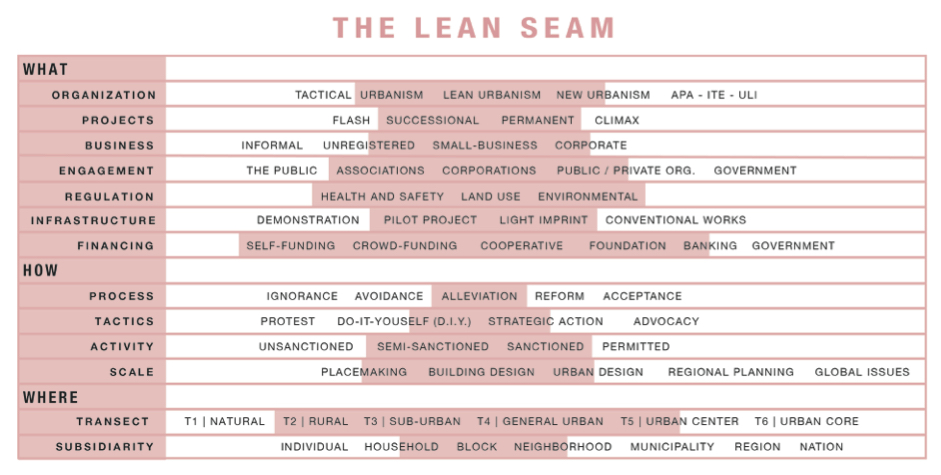
Falk: That also gets at the topic of common sense. These people are often doing the only thing they're able to do and it ends up being unsafe because they're not allowed to work through the official system in a way that allows them to achieve what they want. Very often municipalities don't think about unintended consequences of regulation and in this example, it drives people into unsafe practices. Another problem with unintended consequences is cost. It's very rare that municipalities pay attention to the cost they add to the opening of a small business or the development of a small real estate project and yet, they bemoan the lack of small businesses or the fact that the buildings and lots are vacant.
Are there people out there that are doing Lean Urbanism, but don't really know it? They may not use that name. And if so, who are they?
Falk: We were inspired initially by work that's going in Detroit. Everyone is aware of the economic difficulties that Detroit suffered. But few people are aware of all the activity that actually is going on. And part of that was because they were not held to the same requirements that they had been previously. Another example is in the city of Phoenix. The city recognized that people in a certain neighborhood were creating projects that were contributing to the neighborhood, but they weren't doing it through official channels. Rather than shutting these people down, the city recognized that they were positive projects and figured out ways to make it possible for them and for others to do similar things.
Dittmar: There's a group in the UK called Massive Small which is dedicated to the idea that encouraging small-scale development is the right way to deal with the global challenge of urbanization. There’s also the recent government white paper here in the UK that has proposed the creation of pink zones or places where planning can be pre-approved to enable smaller scale development to take place. They heard about it from us but then they've taken it forward on their own so the idea is gaining currency in many different ways. It’s not important whether we own the label or not.
Any final thoughts?
Falk: Our toolkit continues to become more and more robust. Right now, we’re working on a lean zoning code repair tool, the basis of a session at CNU in Seattle. The rationale behind this tool is that we recognize that code overhaul doesn't happen in a whole lot of places because it's so expensive, difficult, and time consuming. With this tool, we’ve identified a small number of zoning issues that are frequent impediments to Lean Urbanism. The tool helps people analyze their own local code to see whether these impediments exists and, if so, what they might do to reduce or remove them. We also have a beginner's toolkit for Lean Development that's in progress, and a manual for the Lean Scan, the assessment tool that we use in the first phase of all of our pilot projects.
Note: CNU intern Benjamin Crowther helped to produce this interview and article.





